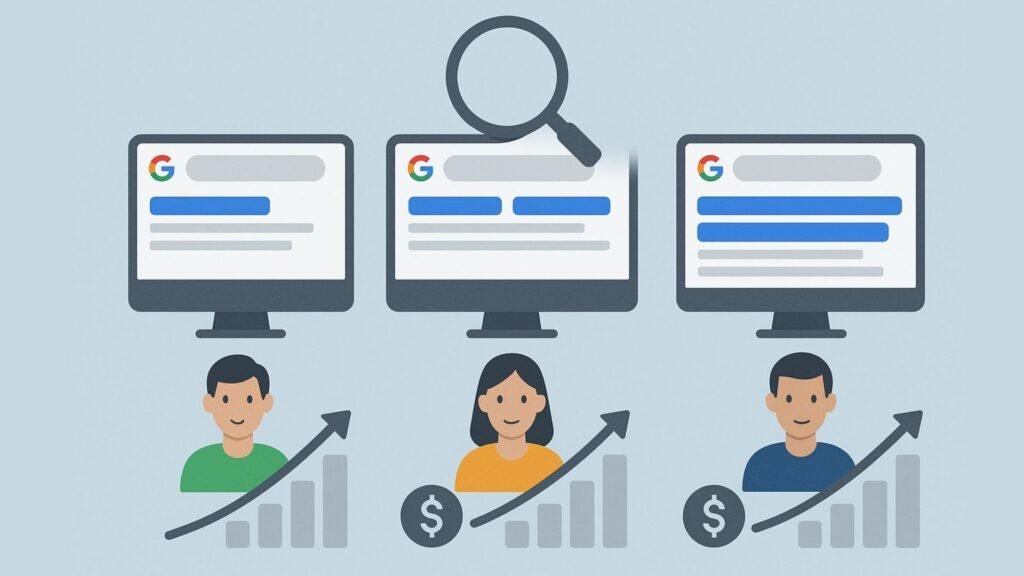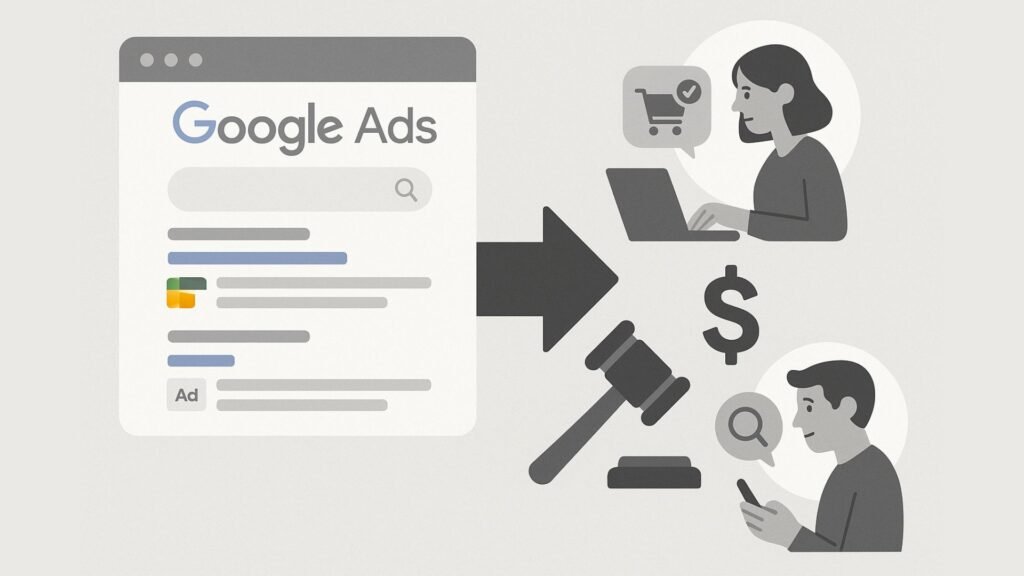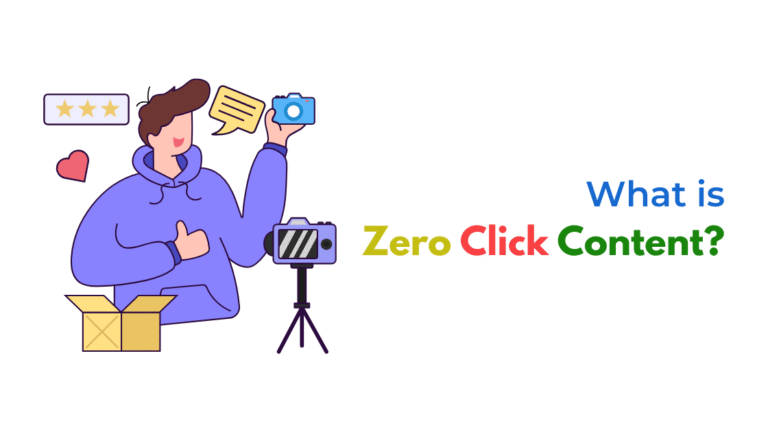Google Ads auction-time bidding varies even for identical search queries because it evaluates each user’s intent, device, location, and behavior in real time. Two users searching the same keyword may receive different bids based on how likely they are to convert. Here’s how it works—and what to do about it.

Have you ever noticed that two users searching the exact same keyword—say, “digital marketing agency near me”—don’t trigger the same bids or ad positions in Google Ads? That’s because auction-time bidding isn’t just about the keyword.
It’s about the context of the user and how likely they are to convert at that moment.
In this blog, we’ll explain:
- Why Google Ads shows different bids for identical search terms
- How user intent is calculated in real-time
- What factors influence auction-time bidding
- What you can do to manage and align your campaigns
What Is Auction-Time Bidding in Google Ads?
Auction-time bidding is part of Smart Bidding, Google’s automated system that adjusts your bids at the moment of each search. It uses machine learning to decide:
“How much should we bid for this impression, based on the likelihood of conversion?”
It happens in milliseconds, every time someone searches a keyword that could trigger your ad.
Even if two users search the same query—say, “affordable video editor”—they might receive completely different ads, or you might bid higher for one and skip the other entirely.
Why Identical Queries Can Trigger Different Bids
Google Ads uses more than just the search term to determine the bid. It evaluates hundreds of real-time signals that represent user intent and context.
Here’s what changes behind the scenes:
1. User’s Past Behavior and Intent Signals
Google considers:
- Previous browsing history
- Past purchase behavior
- Interaction with similar ads or businesses
If User A has visited agency websites or interacted with ads in your category recently, their purchase intent is higher than User B, who searched out of curiosity.
Result: Google bids higher for User A, even with the same keyword.
2. Device and Time of Day
Someone searching on a desktop during work hours may have different intent than someone searching on a mobile device at 11 PM.
- Device type
- Operating system
- App usage behavior
Google adjusts your bid based on what device typically converts better for your offer.
3. Location Granularity
Even if both users are in the same city, micro-location matters. For example:
- One user is near your physical office
- Another is in a neighborhood where your services are less in demand
Result: The system may increase or lower your bid accordingly.
4. Language and Search History
If someone regularly searches in your target language and visits related sites, Google assigns a higher conversion probability.
This is especially important in bilingual or multilingual regions.
5. Audience List Membership
If one user is on your:
- Remarketing list
- Customer Match list
- Similar audience group
…Google considers them warmer and may boost the bid.
Another user, with no past interaction, is less likely to convert—so the bid drops or is skipped.
6. Real-Time Auction Competition
Bid variation also depends on:
- How many competitors are in the auction at that moment
- What their bids and Quality Scores are
- Whether they’re targeting the same or broader audience types
Even if the keyword is the same, a more competitive auction for User A leads to a higher bid or no win at all.
What This Means for Your Campaigns
You don’t have direct control over Google’s auction-time decisions, but you can influence the outcome by shaping what signals the system sees and how well it can predict conversion value.
Here’s how:
How to Improve Auction-Time Performance

1. Feed the Algorithm Quality Data
- Use enhanced conversions or offline conversion tracking to send better signals
- Ensure your conversion actions are meaningful (e.g., purchases, qualified leads)
- Remove low-value goals from Smart Bidding
The better your data, the smarter Google can bid.
2. Segment Campaigns by Intent
Instead of mixing cold traffic, warm traffic, and remarketing in the same campaign:
- Use remarketing campaigns with higher bids
- Separate generic top-of-funnel keywords from high-intent branded ones
- Adjust creative and landing pages accordingly
This improves your conversion rate per signal group.
3. Use Value-Based Bidding Strategies
Switch to:
- Target ROAS (if you can track revenue)
- Maximize Conversion Value (for ecommerce or lead scoring)
This allows Google to bid not just based on conversion likelihood, but also on potential value.
4. Utilize Audience Signals and Segments
Feed Smart Bidding with:
- Custom intent audiences
- Competitor-based segments
- First-party lists via Customer Match
This helps shape bidding decisions even when a user isn’t on your list directly.
5. Analyze Auction Insights
In your campaign dashboard:
- Go to Auction Insights
- Compare overlap, outranking share, and impression share with competitors
See if:
- You’re losing auctions due to low bids
- A competitor’s presence is pushing up the required CPC
Adjust strategy or targeting accordingly.
Common Misunderstandings
| Myth | Truth |
|---|---|
| “I should see consistent CPCs for each keyword.” | No—CPC varies by user and context. |
| “Smart Bidding treats all users equally for the same query.” | It doesn’t. Context drives bids. |
| “My ads aren’t working because Google is broken.” | It’s more likely that intent signals are weak or missing. |
Additional Resources
Final Thoughts
Google Ads isn’t just bidding on keywords anymore—it’s bidding on users and context. Two people searching the same thing may receive different treatment because their intent, behavior, and expected value are different.
To perform well in this environment:
- Send accurate, high-quality conversion data
- Set clear goals for Smart Bidding
- Understand and respect the system’s flexibility
Smart Bidding isn’t unpredictable—it just requires smarter inputs.
Need Help Controlling Smart Bidding Outcomes?
At Socinova, we help businesses implement intent-driven campaign structures, optimize audience signals, and align Smart Bidding with real business value. Whether you’re scaling ecommerce or running lead gen, we can fine-tune your setup.
Talk to us and let’s make auction-time bidding work for you.




